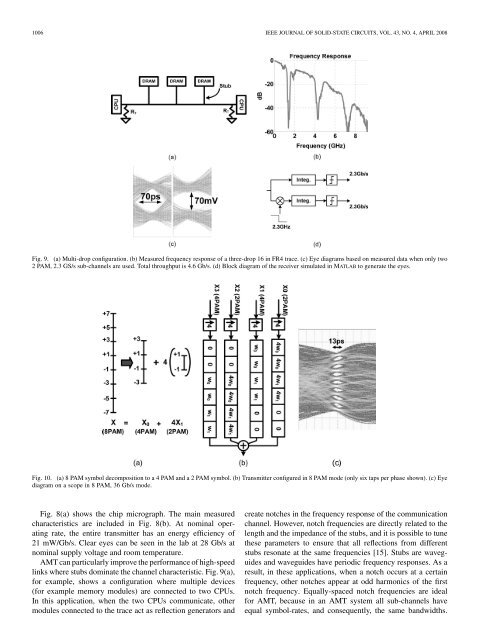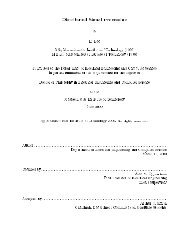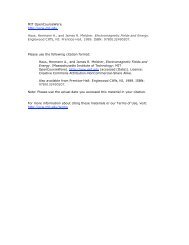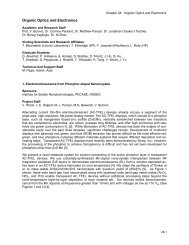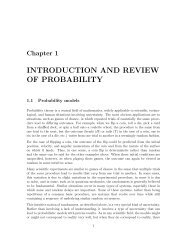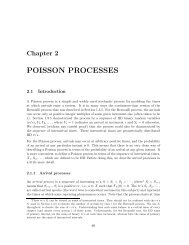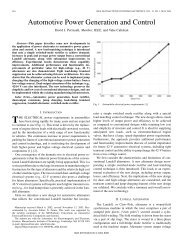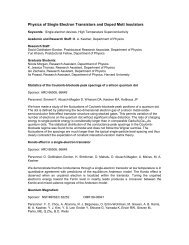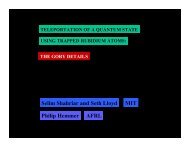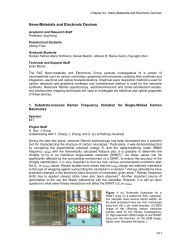A 24 Gb/s Software Programmable Analog Multi-Tone - Research ...
A 24 Gb/s Software Programmable Analog Multi-Tone - Research ...
A 24 Gb/s Software Programmable Analog Multi-Tone - Research ...
Create successful ePaper yourself
Turn your PDF publications into a flip-book with our unique Google optimized e-Paper software.
1006 IEEE JOURNAL OF SOLID-STATE CIRCUITS, VOL. 43, NO. 4, APRIL 2008<br />
Fig. 9. (a) <strong>Multi</strong>-drop configuration. (b) Measured frequency response of a three-drop 16 in FR4 trace. (c) Eye diagrams based on measured data when only two<br />
2 PAM, 2.3 GS/s sub-channels are used. Total throughput is 4.6 <strong>Gb</strong>/s. (d) Block diagram of the receiver simulated in MATLAB to generate the eyes.<br />
Fig. 10. (a) 8 PAM symbol decomposition to a 4 PAM and a 2 PAM symbol. (b) Transmitter configured in 8 PAM mode (only six taps per phase shown). (c) Eye<br />
diagram on a scope in 8 PAM, 36 <strong>Gb</strong>/s mode.<br />
Fig. 8(a) shows the chip micrograph. The main measured<br />
characteristics are included in Fig. 8(b). At nominal operating<br />
rate, the entire transmitter has an energy efficiency of<br />
21 mW/<strong>Gb</strong>/s. Clear eyes can be seen in the lab at 28 <strong>Gb</strong>/s at<br />
nominal supply voltage and room temperature.<br />
AMT can particularly improve the performance of high-speed<br />
links where stubs dominate the channel characteristic. Fig. 9(a),<br />
for example, shows a configuration where multiple devices<br />
(for example memory modules) are connected to two CPUs.<br />
In this application, when the two CPUs communicate, other<br />
modules connected to the trace act as reflection generators and<br />
create notches in the frequency response of the communication<br />
channel. However, notch frequencies are directly related to the<br />
length and the impedance of the stubs, and it is possible to tune<br />
these parameters to ensure that all reflections from different<br />
stubs resonate at the same frequencies [15]. Stubs are waveguides<br />
and waveguides have periodic frequency responses. As a<br />
result, in these applications, when a notch occurs at a certain<br />
frequency, other notches appear at odd harmonics of the first<br />
notch frequency. Equally-spaced notch frequencies are ideal<br />
for AMT, because in an AMT system all sub-channels have<br />
equal symbol-rates, and consequently, the same bandwidths.


